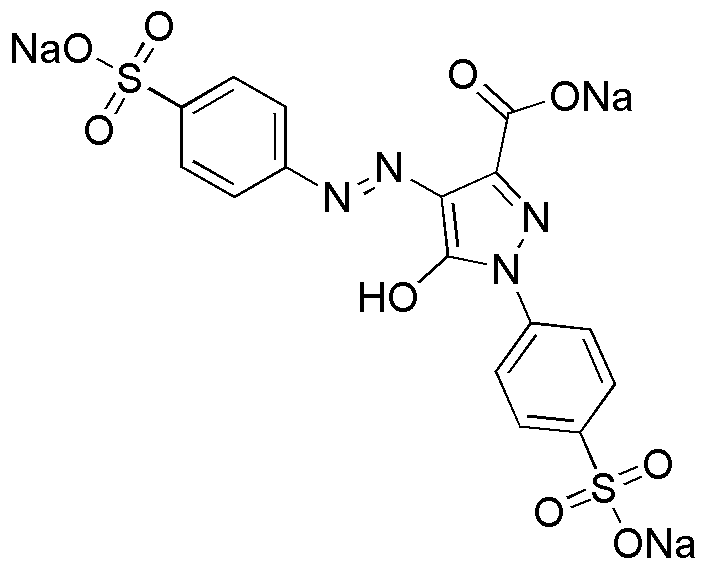Tartrazine is widely utilized in research focused on:
- Food Industry: Commonly used as a yellow food coloring agent, it enhances the visual appeal of products like candies, beverages, and baked goods, making them more attractive to consumers.
- Pharmaceuticals: Employed in the formulation of medications, it helps in identifying different drugs by color-coding, which can improve patient compliance and reduce medication errors.
- Cosmetics: Used in personal care products such as shampoos and lotions, it provides vibrant color while being safe for skin application, appealing to consumers looking for aesthetically pleasing products.
- Textiles: Applied in dyeing processes, it offers a bright yellow hue for fabrics, which is important for fashion and design industries aiming for bold colors.
- Research and Development: Utilized in various laboratory settings to study the effects of colorants on biological systems, helping researchers understand the impact of synthetic dyes on health and the environment.
General Information
Properties
Safety and Regulations
Applications
Tartrazine is widely utilized in research focused on:
- Food Industry: Commonly used as a yellow food coloring agent, it enhances the visual appeal of products like candies, beverages, and baked goods, making them more attractive to consumers.
- Pharmaceuticals: Employed in the formulation of medications, it helps in identifying different drugs by color-coding, which can improve patient compliance and reduce medication errors.
- Cosmetics: Used in personal care products such as shampoos and lotions, it provides vibrant color while being safe for skin application, appealing to consumers looking for aesthetically pleasing products.
- Textiles: Applied in dyeing processes, it offers a bright yellow hue for fabrics, which is important for fashion and design industries aiming for bold colors.
- Research and Development: Utilized in various laboratory settings to study the effects of colorants on biological systems, helping researchers understand the impact of synthetic dyes on health and the environment.
Documents
Safety Data Sheets (SDS)
The SDS provides comprehensive safety information on handling, storage, and disposal of the product.
Product Specification (PS)
The PS provides a comprehensive breakdown of the product’s properties, including chemical composition, physical state, purity, and storage requirements. It also details acceptable quality ranges and the product's intended applications.
Certificates of Analysis (COA)
Search for Certificates of Analysis (COA) by entering the products Lot Number. Lot and Batch Numbers can be found on a product’s label following the words ‘Lot’ or ‘Batch’.
Número de catálogo
Número de lote/lote
Certificates Of Origin (COO)
This COO confirms the country where the product was manufactured, and also details the materials and components used in it and whether it is derived from natural, synthetic, or other specific sources. This certificate may be required for customs, trade, and regulatory compliance.
Número de catálogo
Número de lote/lote
Safety Data Sheets (SDS)
The SDS provides comprehensive safety information on handling, storage, and disposal of the product.
DownloadProduct Specification (PS)
The PS provides a comprehensive breakdown of the product’s properties, including chemical composition, physical state, purity, and storage requirements. It also details acceptable quality ranges and the product's intended applications.
DownloadCertificates of Analysis (COA)
Search for Certificates of Analysis (COA) by entering the products Lot Number. Lot and Batch Numbers can be found on a product’s label following the words ‘Lot’ or ‘Batch’.
Número de catálogo
Número de lote/lote
Certificates Of Origin (COO)
This COO confirms the country where the product was manufactured, and also details the materials and components used in it and whether it is derived from natural, synthetic, or other specific sources. This certificate may be required for customs, trade, and regulatory compliance.


